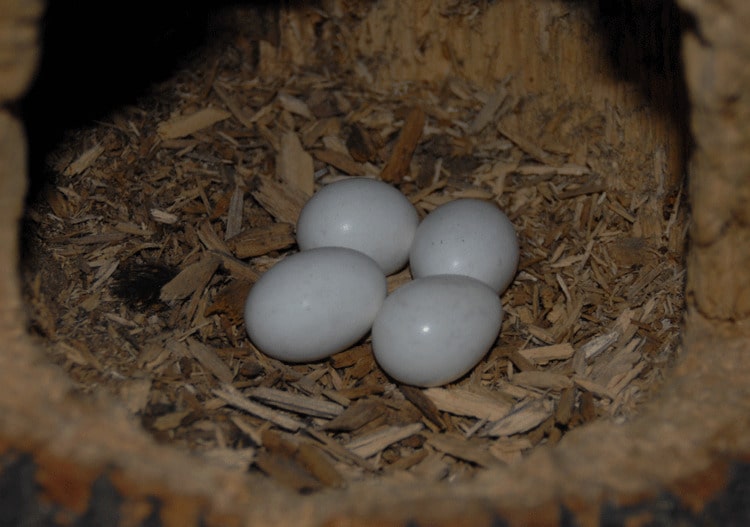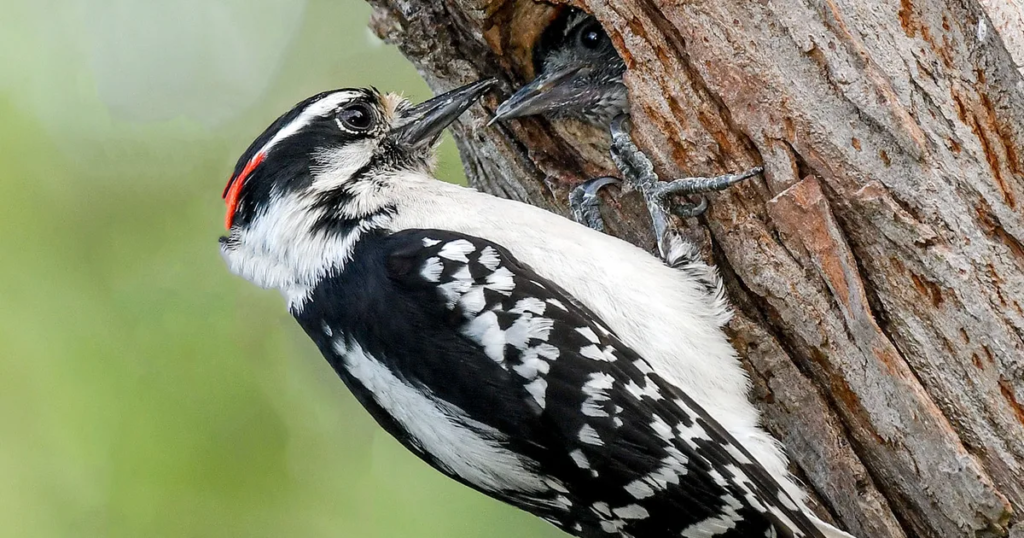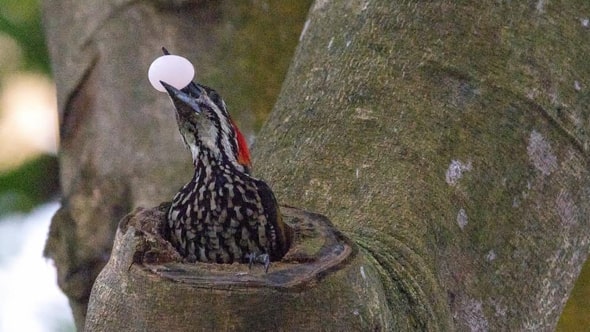Woodpeckers are fascinating birds known for their unique behaviors and adaptations. One particularly intriguing aspect of their lives is the eggs they lay. In this essay, we will explore everything you need to know about woodpecker eggs. From their appearance and size to their hatching process and the challenges the chicks face, discover all you’ll ever need to know about woodpecker eggs.
Appearance and Size Of Woodpecker Eggs:
Woodpecker eggs are typically small, ranging in size from about one to one and a half inches in length. They have an oval shape and are smooth to the touch. The color of woodpecker eggs varies among species, but they are commonly white or off-white. The shell is relatively strong to protect the developing embryo inside.
Egg-laying Process:
Woodpeckers, like many other bird species, mate and lay eggs during the breeding season. After a successful courtship, the female woodpecker selects a suitable tree cavity, which can either be pre-existing or excavated by the pair, to serve as a nest. She then starts laying her eggs, typically one per day until the clutch is complete. The clutch size varies among woodpecker species but usually ranges from three to eight eggs.
Incubation and Hatching Of Woodpecker Eggs:
Once the eggs are laid, incubation begins. It is primarily the female’s responsibility to incubate the eggs while the male provides food for the pair. The incubation period lasts for about two weeks, during which time the parents take turns keeping the eggs warm. The constant warmth provided by the parents promotes the development of the embryos inside the eggs. When the time is right, the chicks begin hatching from their shells.
Challenges and Survival:
Woodpecker eggs and the subsequent chicks face several challenges during their development. Predation is a significant threat, as many animals will eagerly consume both the eggs and the vulnerable chicks. To protect their offspring, woodpeckers diligently guard their nest, warding off potential predators. Additionally, the parents need to ensure a steady supply of food to sustain the growing chicks after hatching.
Fledging and Leaving the Nest:
Once the chicks have grown significantly, they are ready to leave the nest. This stage, known as fledging, symbolizes a crucial milestone in a woodpecker’s life. The young woodpeckers strengthen their wings, muscles, and coordination by climbing around the nest cavity. After a few weeks of practice, they take their first flight, leaving the safety of the nest and embarking on their independent journey.
Conservation and Protection:
Understanding woodpecker eggs and their significance helps in conserving these remarkable birds. Woodpeckers play an important role in maintaining the health of forest ecosystems, as they help control insect populations and create habitats for other creatures through their excavation activities. Efforts to preserve their natural habitats, including the protection of trees with suitable cavities for nesting, can contribute to the long-term survival of woodpecker populations.
Conclusion:
Woodpecker eggs offer a fascinating glimpse into the life cycle of these incredible birds. From their appearance and size to their hatching process and the challenges they face, learning about woodpecker eggs provides a deeper understanding of the intricate lives of these avian wonders. Through conservation efforts and a commitment to preserving their habitats, we can ensure the continued existence and well-being of woodpecker populations for future generations to admire and appreciate.
Read More: Teen Paris Lee Bennett Killer Who Murders His Little Sister







